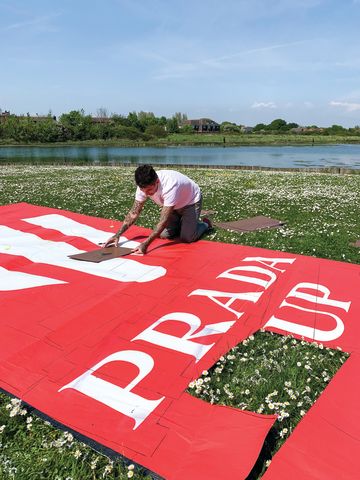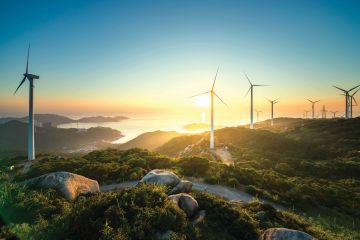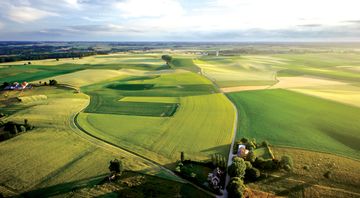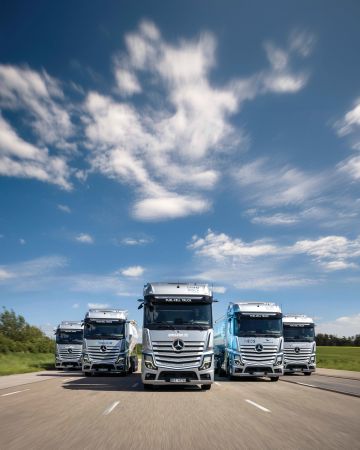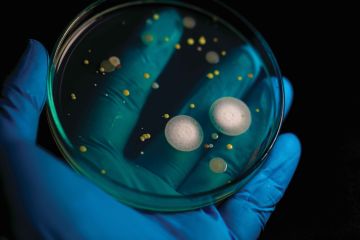INEOS teams up to test world-first
NEOS Nitriles has agreed to host the next stage of a company’s development of its ground-breaking acrylonitrile technology. If it works, INEOS’ plant in Texas, US, will be able to start producing sustainable acrylonitrile using plant-based raw materials from next year – and significantly cut CO2 emissions in the process. For INEOS, it is a chance to be involved in another world first.
For Trillium Renewable Chemicals, a company which was founded in a garage about 10 years ago, it is a chance to show off its patented, proven technology to a global market that is desperately seeking greener, bio-based raw materials.
“Demonstrating Trillium’s technology at a larger scale will allow our customers to verify product quality at scale,” said Trillium chairman Erik Scher. “That will be a key milestone in our path to becoming a leading producer of renewable chemicals.”
The demonstration plant, for the production of acrylonitrile from plant-based glycerol, will be built at INEOS Nitriles’ Green Lake facility, which is already home to one of the largest and most advanced acrylonitrile producing units in the world.
“Our support of this project, which is part of our wider sustainability strategy, emphasises our commitment, as the world’s largest producer of acrylonitrile, to reducing the carbon footprint of the industry,” said Hans Casier, CEO of INEOS Nitriles.
Acrylonitrile and its co-products are valuable raw materials that are used in a range of interesting products from structural parts in planes and cars to acrylic fibre sweaters and toys.
Trillium knows its technology works, and valuable lessons have been learned from its pilot plant, which will continue running to provide customers with sample products.
The first onshore carbon capture and storage
JUST months after proving to the world that it was possible to capture, transport cross border, inject and safely store CO2 1.8kms under the seabed, INEOS has now been given the green light to look at safely storing it deep underground on land.
INEOS, which leads the ground-breaking Project Greensand, will now work closely with its two partners to determine whether the Gassum formation in Jutland, Denmark, is also a suitable location for CO2 storage.
“The potential for safe storage in Gassum is high,” said Mads Weng Gade, Head of INEOS Energy Denmark, “but we now need to conduct the necessary studies utilizing the important learnings from Greensand to demonstrate safe and efficient storage in Gassum as well.”
Denmark wants to lead the way in establishing a new, commercially-viable carbon capture and storage industry in Europe.
Its decision to award its very first onshore carbon capture and storage licence to INEOS Energy Denmark, Wintershall Dea and Nordsøfonden is seen a step towards that.
“Establishing offshore and onshore sites for permanent storage of CO2 will be crucial for the EU to meet its climate goals and to support a robust market for carbon capture and storage,” said David Bucknall, CEO INEOS Energy.
The Danish geology has significant potential for CO2 storage. According to analysis by the Geological Survey of Denmark and Greenland (GEUS), there is capacity to store between 12 and 22 billion tonnes of CO2 in the Danish sub-surface, which is equivalent to 700 times Denmark’s annual CO2 emissions.
If all goes well, the three partners hope to start pumping CO2 into two separate geological formations in Jutland in 2029.
INEOS opens doors to innovation
INEOS has become the first plastic producer in the world to invest in technology that could prevent one million tonnes of waste ending up in landfill sites each year. Manufacturers, who are keen
to develop recyclable plastic packaging, are now being invited by INEOS O&P to test the technology at its R&D centre in Brussels.
“Flexible packaging films play a valuable role in society, but we recognise and share people’s concerns about plastic waste,” said CEO Rob Ingram. “That’s why fully recyclable films are a big development.”
INEOS’ customers will be able to test the new multi-layer, blown film line on INEOS’ premises without affecting production at their own manufacturing sites.
And they are lining up to do so.
Plastic packaging keeps food fresher, for longer. Without it, many of the products on supermarket shelves would not survive the journey to the store. And keeping food fresh reduces food waste, which is another major contributor to climate change.
But there’s also a problem with plastic packaging, when it comes to recycling, because it is made from so many different polymers, and different plastics melt at different temperatures.
“Making simpler films with the same performance means the new packaging can be more easily recycled,” said Rob.
The state-of-the-art technology, supplied by Hosokawa Alpine, heats and stretches polymer films to improve their quality.
INEOS will be using the new pilot line and its own polymer expertise to develop new, packaging film products from polyethylene and polypropylene.
INEOS answers call for greener ammonia
AS the world’s population grows, so too does the demand for ammonia, which is widely used as a fertiliser to help grow healthy crops, and provides an important raw material for acrylic and carbon fibre. And it’s a greener ammonia the world wants now more than anything. To meet that growing demand, INEOS Nitriles and Hanwha Corporation are considering building an ammonia plant in America with low CO2 emissions. The plant would be capable of producing more than one million tonnes of ammonia a year and help both companies to cement their position in the global ammonia market.
The hydrogen used to make the ammonia would be produced from natural gas, with the unwanted CO2 emissions captured and permanently stored.
As the largest producer of acrylonitrile globally, INEOS will use this low-carbon ammonia to make acrylonitrile, to help cut emissions in markets that rely on acrylonitrile for everything from water purification to green energy and from pharmaceuticals to toys and construction.
Although a final investment decision about the plant won’t be made until 2026, both companies are excited at the potential environmental benefits.
“This project is a potentially important contributor to INEOS Nitriles’ carbon emission reduction targets in 2030 and its net zero ambitions by 2050,” said Hans Casier, CEO of INEOS Nitriles.
Kiwon Yang, CEO of South Korea’s Hanwha Corporation, believes it could prove to be a pivotal turning point in his company’s vision for a sustainable future.
About 80% of the ammonia produced by industry is used in agriculture as a fertiliser with China deemed to be the world’s leading producer. The location of the proposed US plant has yet to be decided.



